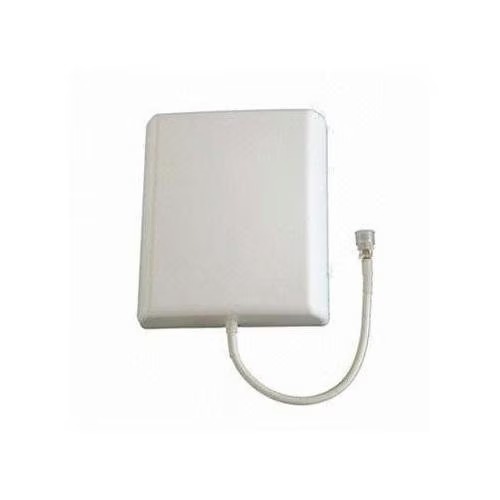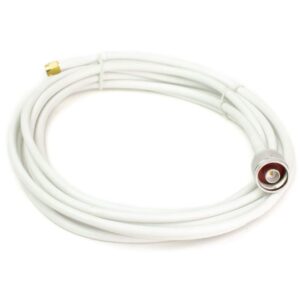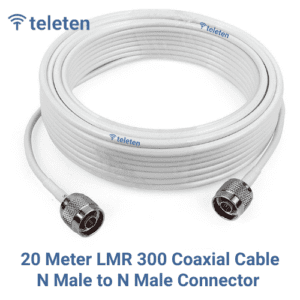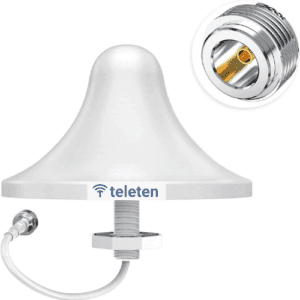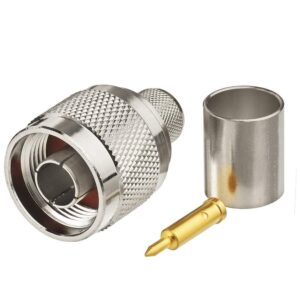Design Concept:
Patch Panel Antenna: Known for its flat, rectangular or square design, which provides a compact and efficient form factor. This type of antenna typically consists of a conductive patch on a dielectric substrate.
Wide Frequency Range: Covers a broad spectrum, making it versatile for multiple communication technologies.
Key Features:
Gain:
9 dBi Gain: Provides substantial signal amplification, which enhances coverage and signal strength. This gain level is beneficial for extending the range and improving the performance of wireless networks.
Frequency Range:
700-2700 MHz: This broad frequency range includes various wireless communication bands, such as cellular frequencies (2G, 3G, 4G LTE, and potentially 5G), as well as Wi-Fi bands. This ensures compatibility with a wide array of devices and technologies.
Radiation Pattern:
Directional or Semi-Directional: Patch panel antennas generally offer a focused radiation pattern. This means the antenna concentrates the signal in specific directions, which helps in targeting particular areas or improving signal quality in certain directions.
Cable Length:
8-Meter Cable: Provides flexibility in antenna placement. The length of the cable allows for the antenna to be mounted in locations that are not immediately adjacent to the network equipment, which can be useful for optimizing signal coverage.
Design Specifications:
Frequency Range:
700-2700 MHz: Suitable for a range of applications including cellular network equipment, Wi-Fi systems, and other wireless communication technologies operating within this frequency band.
Gain:
9 dBi Gain: Enhances signal strength significantly, which can improve connectivity and coverage in both indoor and outdoor environments.
Size and Shape:
Compact and Flat: Typically rectangular or square, designed for easy mounting on walls, ceilings, or other surfaces. The compact design makes it suitable for environments with limited space.
Connector Types:
Common Connectors: The antenna may come with various connector options like N-type, SMA, or others, depending on the equipment and installation requirements.
Cable Specification:
8-Meter Coaxial Cable: The cable is typically made of high-quality coaxial material to ensure minimal signal loss over its length. The cable’s connectors should match the antenna and network equipment.
Installation:
Mounting:
Wall or Surface Mount: The antenna can be mounted on walls, ceilings, or other flat surfaces. Ensure that the mounting surface is clean and suitable for attachment.
Cable Management: Securely manage the 8-meter cable to avoid damage and ensure a clean installation. Use cable clips or ties as needed.
Connection:
Coaxial Cable: Connect the antenna to the network equipment using the 8-meter coaxial cable. Ensure all connections are secure and properly weatherproofed if used outdoors.
Testing:
Coverage and Performance: After installation, test the antenna to verify that it provides the desired coverage and signal strength. Adjust placement or orientation as necessary for optimal performance.
Applications:
Cellular Networks: Suitable for use in cellular base stations, repeaters, and other infrastructure to enhance signal strength and coverage.
Wi-Fi Networks: Can improve Wi-Fi coverage and performance, particularly in areas where extended range or signal enhancement is needed.
General Wireless Communication: Ideal for any application requiring coverage within the 700-2700 MHz frequency range.
Maintenance:
Regular Inspection: Check the antenna and cable periodically for signs of wear, damage, or corrosion.
Cleaning: Keep the antenna clean and free from debris to ensure optimal performance.
Considerations:
Directional Pattern: The antenna’s focused radiation pattern may require careful alignment to cover the intended area effectively.
Network Compatibility: Ensure that the antenna’s frequency range and gain are compatible with the network equipment and application.
A patch panel antenna with 9 dBi gain, a frequency range of 700-2700 MHz, and an 8-meter cable is designed to offer high performance and flexibility for various wireless communication needs.

